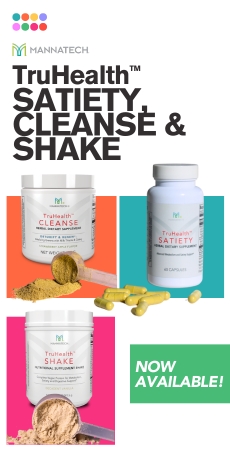
Navigating around environmental toxins: 10 ways to reduce your exposure
We’re exposed to environmental toxins twenty-four hours a day, 365 days a year. No exaggeration here, though we wish we were. Who knew that a simple trip to the gas station, an afternoon at the nail shop, or even a weekly run to Whole Foods could give us exposure to invisible yet harmful pollutants? You’re surrounded by chemicals from shampoo to “organic” cleaning products; unfortunately, they’re unavoidable. Regardless, the intent of this blog isn’t to evoke fear but to create awareness of the tools we possess to fight against the contaminants that are, most times, hiding in plain sight. Here are 10 tips that can help bring your toxin exposure to a minimum.
Tip #1: Reduce the number of pollutants in your safe spaces.
Toxins are like a monster in a scary movie. No matter where you go, you can’t hide from them. However, in real life, you’re not defenseless. You can minimize everyday exposure to toxins in your personal ecosystem. De-toxifying efforts can range from easy to extensive, but it’s all worth it. You may never rid your life of them, but you’ll sleep easier knowing fewer toxins surround you. Here are a few ways that you can protect yourself when carrying out common tasks in or around the house.
Opt for more natural cleaning products.1
- Vinegar – Mildew and grease remover
- Lemon juice – Stain remover, glass cleaner, and deodorizer
- Baking soda with water – All-purpose cleaner
- Olive oil – Furniture polish
All four ingredients above are great examples of natural chemical-free cleaning products. Make sure that the room you’re cleaning is well-ventilated via window or fan, and don’t forget to store them in a safe place. Keep your natural cleaning products in original containers, don’t mix them, and, as always, follow the directions provided.
Be mindful of handling toxic products in enclosed and open spaces.1
When working on cars, lawnmowers, or anything that requires gas, you should have a place to dispose of the old oil. When working with chemicals like oil and pesticides, you should wear protective equipment like a respirator mask, gloves, goggles, or long sleeve shirts and pants. Pesticides may be a great way to rid your yard of insects, but they can contaminate the soil, affecting the food you grow and eat. Polluted soil can circulate through the air as dust particles. For those with a green thumb, have your soil tested before you fertilize, and don’t fertilize before or after rainfall, washing your fruits and veggies before you eat them. If your favorite retreat happens to be your garage, protect it from lingering carbon monoxide toxins by keeping the door up minutes after you’ve run your car.
A carbon monoxide-free household.1
Grills inside the house and gas ovens to heat your home are a no-no. Why? They can produce carbon monoxide, an odorless, colorless, toxic gas that can harm those in contact with it. Protect yourself by installing carbon monoxide detectors inside your home. We may be approaching summer, but fireplace safety never goes out of season. Have your chimney checked for problems regularly, and don’t burn treated lumber. It can release toxic smoke when it burns.
Check your home for mercury, asbestos and lead.1
Asbestos, mercury, and lead aren’t contaminants of the past. They can presently inhabit your home. These materials are hazardous, and their removal may require special gear. Asbestos is typically found in insulation, wiring, and roof or siding shingles. Mercury, on the other hand, is related to thermostats and old light switches. Lead is found in old plumbing and paint. Hiring a professional might be your best bet because of the level of toxicity and the hidden dangers that each toxin poses.
Tip #2: Shake off the stress.
When you’re stressed, free radicals thrive. The increased oxygen levels during tension can create an ideal environment for toxins, and believe it or not, it doesn’t take much to trigger it.2 Anything from a horrible night’s sleep to rush hour traffic can prompt oxidative stress, so to reduce your oxidative levels, you must de-stress mentally and physically:
Stress can get complicated, but there are solutions. Click here for a simplistic way to restore your Zen.
Tip # 3: Eat more antioxidants.
When chatting about environmental toxins, we’re more likely to gravitate toward what they are capable of instead of what we can do to help reduce our exposure. We are not totally helpless in the battle against free radicals. There are ways to fight back, with help from antioxidants:
- Vitamin A – Foods rich in vitamin A, such as spinach, dairy products, and liver, boost your antioxidant levels against free radicals. If you aren’t into spinach and liver or are lactose intolerant, consuming sustenance rich in beta carotene, like leafy veggies and carrots, can also convert into vitamin A.3
- Vitamin C– This nutrient has antioxidant properties that can help safeguard your cells against free radicals. While your body can’t produce vitamin C, it can be absorbed through what you eat. Berries, citrus fruits, vegetables, broccoli, spinach, and Brussels sprouts include high levels of this vitamin.4
- Vitamin E – Like vitamins A and C, vitamin E contains antioxidants in the food or oils we cook with. Canola oil, olive oil, margarine, almonds, meats, leafy greens, and fortified cereals contain high amounts of vitamin E.5
Tip # 4: Quit smoking.
Cigarette smoke is a notorious environmental pollutant. The oxygen radicals in smoking alone promote oxidative stress and can weaken your antioxidant defense.6 Tobacco smoke is made up of tar and gas phases, both containing huge amounts of free radicals. Smokers are thought to have three things working against them in terms of avoiding oxidative stress.7
- They smoke.
- Have poorer eating habits, reducing their antioxidant intake.
- More likely to consume alcohol.
How can you reduce toxic intake from cigarette smoke? Cut smoking altogether. It’s not easy, but it’s possible.
Here are a few steps that might help you achieve this life-altering goal:8
- Make the decision to stop smoking.
- Grab a calendar and set a quit date.
- Take advantage of resources for support.
Tip # 5: Reduce alcohol intake.
To us, it’s just a drink. To our bodies, it’s a different story. Alcohol consumption produces small, highly reactive oxygen molecules capable of reducing antioxidants and accelerating the formation of free radicals, which can result in cell damage.9 Much like smoking, a modification of drinking habits can also be a difficult task to undertake. Here are additional tips on how to reduce your alcohol intake and the free radicals that accompany them:
- Write your reasons for reducing your alcohol intake.
- Create a drinking limit for yourself.
- Avoid the temptation of alcohol in your house.
- Keep yourself busy.
- Ask for support from loved ones.
Tip # 6: Get a good night’s sleep.
A bad night’s sleep doesn’t just make us tired and grumpy. It can impact our oxidative stress levels. Researchers have identified a connection between environmental exposures and poor sleep. Heavy metals (mercury and lead), light pollution, noise pollution, and second-hand smoke impact sleep outcomes, such as sleep quality, duration, and circadian rhythms.10 Don’t let toxins steal valuable sleep from you. Take back your night by doing the following:
read, walk, or reflect on your thoughts meaningfully.11
Not getting quality sleep these days? Click here for supplemental information on how to achieve a perfect night’s slumber.
Tip # 7: Protect your skin.
Did you know that air pollution may be to blame for some of our skin’s blemishes? Air pollutants enter our skin through nanoparticles and generate quinones, or biological pigments found in living things, that overwhelm your body’s antioxidant defenses and increase free radicals. Not to worry, we’ve got tips for reducing the free radicals that may affect your skin.
- Increase your antioxidant intake.
- Cleanse your skin twice a day with a gentle cleanser/wash cloth.
- Use an ultrasonic vibrating brush.
- Drink green tea.
- Use witch hazel along with a silicone-based moisturizer.
- Use broad-spectrum sunscreen for protection from UV rays.
- Use makeup remover to clean makeup off your face before going to bed.
Tip #8: Take an antioxidant supplement.
- Vitamin A – Vitamin A supplements are a great way to increase your antioxidant levels. The recommended daily amount of vitamin A for men and women is 900 micrograms (mcg) and 700 micrograms (mcg) respectively.3
- Vitamin C – Most people have adequate levels of this vitamin. Like most antioxidants, vitamin C supplements are available over the counter, though they aren’t a proven substitute for vitamin C received through your diet.4 The recommended daily amount for vitamin C is 90 milligrams (mg) for adult men and 75 milligrams (mg) for adult women.
- Vitamin E – Vitamin E’s power is often underrated, though it’s the antioxidant responsible for aiding vision. Supplement forms of vitamin E are available in capsules or drops. The Recommended daily amount for adults is 15 milligrams (mg).5
Tip # 9: Exercise more.
Working out has more advantages than toned arms and flat abs. Studies have shown that frequent moderate exercise can reduce the harmful effects of free radicals. Physical activity improves antioxidant defenses in addition to lowering lipid (fat) levels in adults. The enzymatic antioxidants, which break down free radicals, increase resistance against toxins and reduce oxidative stress.
Tip # 10: Lose weight. Reduce free radicals.
Obesity has been associated with many ailments, but evidence also suggests that oxidative stress may play an important role in weight gain. Body fat is influenced by the activation of the immune system that promotes oxidative stress, triggering a response. Want to hear some great news? Toxic exposure doesn’t have to be permanent! Get ready for the sunshine because here are some tips for shedding weight and those pesky toxins:
- Get regular exercise.
- Try to opt for more balanced meals (fruit, veggies, proteins, grains, healthy fats).
- Drink more water.
- Develop a meal plan.
- Set realistic goals and ask loved ones for support.
Environmental toxins can affect our overall well-being. They have attributed to what we know today as global pollution and can challenge the health of human beings. Thankfully, we are capable of fighting back. But the first step in the fight is awareness. Educating yourself on reducing exposure to dangerous toxins is one of the most proactive things you can do for your health. We now understand that technological advancements make it difficult to avoid toxins, but minimalizing our contact with them can help us better navigate around environmental toxins.
Sources
1 How to reduce your exposure to chemicals at home, work, and play, Centers for Disease Control.
2 Stress, Oxidative Injury, and Disease, National Library of Medicine.
3 Vitamin A, Mayo Clinic.
4 Vitamin C, Mayo Clinic.
5 Vitamin E, Mayo Clinic
6 Antioxidants and Cancer Prevention, National Cancer Institute.
7 Cigarette Smoking and Oxidative Stress in Patients with Coronary Artery Disease, National Library of Medicine.
8 Quit Smoking Basics, Mayo Clinic.
9 Alcohol, Oxidative Stress, and Free Radical Damage, National Institute on Alcohol Abuse and Alcoholism.
10 Environmental Exposures and Sleep Outcomes: A Review of the Evidence, Potential Mechanisms, and Implications, National Library of Medicine.
11 Tips for Better Sleep, Centers for Disease Control.




















